








Customization Options for Springs: What Can Be Tailored to Your Needs?
ENTER YOUR DIMENSIONS
Select Your Spring Type
COMPRESSION
EXTENSION
TORSION
Select Your Unit of Measurement
Warning Messages
Table of Content
What is a Custom Spring?
A custom spring is a highly specialized spring designed and manufactured to meet the specific requirements of a particular application. Unlike standard, off-the-shelf stock springs, custom springs can be tailored in practically any size, meaning you can change all the dimensions of the spring exactly how you need them. Change the outer diameter, wire diameter, number of coils, length and load to perfectly fit the needs of your project. By customizing these parameters, you can ensure that the spring functions optimally within its intended environment, providing the precise force, flexibility, and durability required. This level of customization enhances the performance and efficiency of your projects by reducing the risk of component failure, improving the longevity of the spring, and ensuring that your system operates smoothly and reliably under various conditions. Whether you're developing a new product or improving an existing one, custom springs allow you to address unique challenges and achieve superior results.
What Can You Customize on a Spring?
1. Size and Dimensions
The size and dimensions of a spring are fundamental factors that determine how it will perform in its intended application. These parameters include the spring's free length, wire diameter, outer diameter, and total number of coils. Each of these dimensions can be customized to ensure that the spring fits perfectly within your assembly and meets the performance criteria required by your application
-
Wire Diameter: The wire diameter refers to the thickness of the wire used to form the spring's coils. This dimension is a critical factor in determining the spring's stiffness, or spring rate, which is the amount of force required to compress or extend the spring by a certain distance. A thicker wire generally results in a stiffer spring, providing greater resistance to deformation under load, while a thinner wire produces a more flexible but weaker spring that compresses or extends more easily. By customizing the wire diameter, you can fine-tune the spring's performance to match the load and deflection requirements of your application. For example, a heavy-duty spring used in industrial equipment may require a thick wire to support substantial loads, whereas a delicate spring in a medical device may need a thin wire to ensure precise, gentle movement.

-
Outer Diameter: The outer diameter of a spring is the measurement from one outer edge of the spring to the opposite outer edge, taken across the center of the coils. This dimension is crucial for ensuring that the spring fits within the designated space in your assembly without interfering with other components. Customizing the outer diameter is particularly important in applications where space is limited or where the spring must fit within a cylindrical housing. For example, in a compact mechanical assembly, the outer diameter may need to be tightly controlled to prevent the spring from rubbing against adjacent parts, which could lead to wear and failure over time.
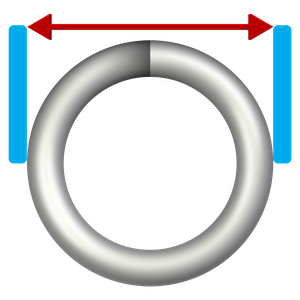
-
Free Length: The free length of a spring is the distance from one end of the spring to the other when the spring is in its unloaded state, meaning no external force is applied to compress or extend it. Customizing the free length is crucial because it directly impacts the spring's ability to fit within a confined space while also allowing for the necessary movement. For instance, a spring used in a small electronic device may need a very short free length to fit within the compact design, while a spring in an automotive suspension system might require a much longer free length to accommodate significant deflection during operation.

-
Total Coils: The total number of coils in a spring determines its flexibility and range of motion. More coils generally mean that the spring can compress or extend more, providing greater deflection under load. However, increasing the number of coils also reduces the spring's stiffness, making it softer and more responsive to smaller forces. Customizing the number of coils allows you to balance the spring's flexibility and stiffness to achieve the desired performance. For instance, a compression spring in a precision instrument may require a high number of coils to provide smooth, controlled movement, while a torsion spring in a heavy-duty hinge might need fewer coils to offer the necessary resistance.
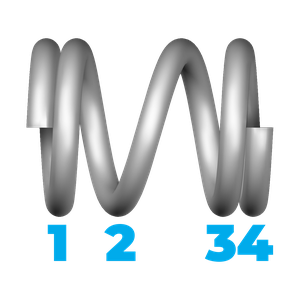
Understanding and customizing the size and dimensions of a spring are the first steps in ensuring that it will perform as intended in your specific application. By tailoring these parameters, you can optimize the spring's fit and function, leading to improved reliability and efficiency in your product.
2. Material Selection
The material of a spring is one of the most critical factors in determining its overall performance, durability, and suitability for a specific environment. Different materials offer varying levels of strength, flexibility, corrosion resistance, and temperature tolerance, making the choice of material a key consideration in the spring customization process. By selecting the appropriate material, you can ensure that the spring not only meets the functional requirements of your application but also withstands the environmental conditions it will be exposed to.
-
Music Wire ASTM A228: Music wire is a high-carbon steel wire known for its excellent tensile strength and durability. It is commonly used in applications that require high-stress resistance and repeated cycling, such as in mechanical linkages, precision instruments, and automotive components. Music wire springs are known for their ability to withstand significant loads without permanent deformation, making them ideal for applications where reliability and longevity are critical. However, music wire is susceptible to corrosion if exposed to moisture or corrosive environments, so it may not be the best choice for applications where corrosion resistance is a priority.
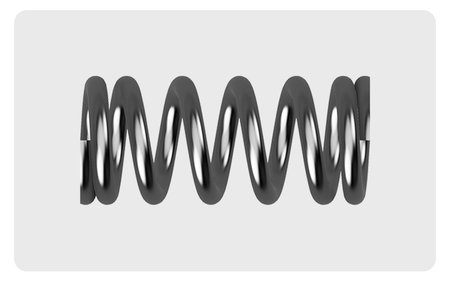
-
Stainless Steel ASTM A313: Stainless steel is a popular material for springs due to its excellent corrosion resistance and overall durability. This material is particularly well-suited for applications in harsh environments where the spring may be exposed to moisture, chemicals, or other corrosive elements. Stainless steel springs are commonly used in the food industry, medical devices, marine equipment, and outdoor applications where rust and corrosion could compromise the spring's performance and safety. In addition to its corrosion resistance, stainless steel also offers good tensile strength and flexibility, making it a versatile choice for a wide range of applications.
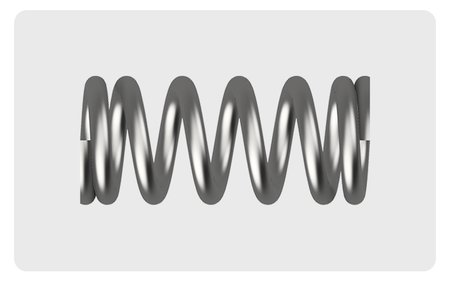
-
Hard Drawn (ASTM A227): Hard drawn wire, classified under ASTM A227, is a carbon steel wire that is cold drawn to achieve a specified diameter and strength. It is a cost-effective material commonly used for springs in general-purpose applications where high tensile strength is not a primary concern. Hard drawn wire springs are suitable for static applications or low-stress environments where the spring is not subject to frequent or extreme cycling. However, it may not be the best choice for environments where the spring is exposed to moisture or corrosive substances, as it lacks the corrosion resistance found in other materials like stainless steel.
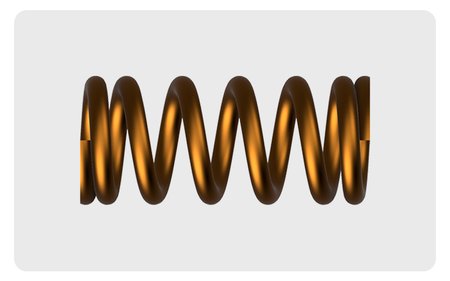
By carefully selecting the right material for your spring, you can enhance its performance and ensure that it meets the specific requirements of your application. For example, if you're designing a spring for a medical device that will be exposed to bodily fluids, stainless steel's corrosion resistance would be crucial for maintaining hygiene and safety. On the other hand, a spring used in a high-temperature industrial furnace would benefit from chrome silicon's heat resistance to prevent deformation and failure.
3. Spring Rate and Load Capacity
The spring rate, often referred to as the spring constant (k), is a fundamental characteristic that defines how much force is required to compress or extend the spring by a given distance, typically measured in pounds per inch (lbs/in). This parameter is closely related to the spring's stiffness and directly influences its behavior under load. Customizing the spring rate and load capacity is essential for ensuring that the spring performs optimally in its intended application.
-
Customizing the Spring Rate: The spring rate is determined by several factors, including the wire diameter, coil count, material, and overall geometry of the spring. By adjusting these variables, you can achieve a spring rate that matches the specific load and deflection requirements of your application. For instance, a higher spring rate is needed for applications that require the spring to support heavy loads or resist significant forces without compressing too much. This is often the case in automotive suspensions, where the springs must support the weight of the vehicle and absorb shocks from the road. Conversely, a lower spring rate may be more appropriate for applications that require gentle, controlled movement, such as in precision instruments or delicate mechanisms. By customizing the spring rate, you can ensure that the spring provides the right balance of stiffness and flexibility for your specific needs
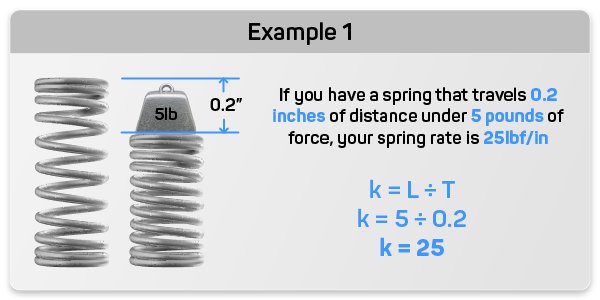
-
Load Capacity: The load capacity of a spring refers to the maximum load it can handle without undergoing permanent deformation or failure. This is a critical factor in ensuring the spring's longevity and reliability in its application. Customizing the load capacity involves selecting the appropriate material, wire diameter, and coil count to ensure that the spring can withstand the forces it will encounter during operation. For example, a spring used in a heavy-duty industrial press may need to support significant loads without compressing fully, requiring a high load capacity and a robust design. On the other hand, a spring in a consumer product like a handheld tool may have a lower load capacity but must still be reliable over repeated cycles of use.
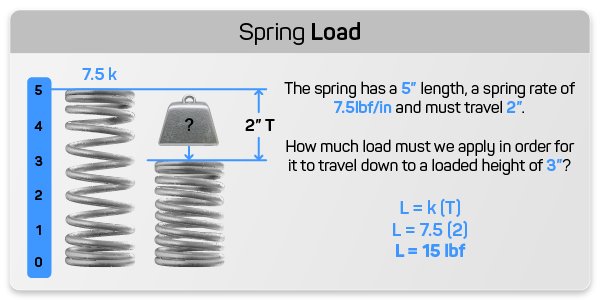
Understanding and customizing the spring rate and load capacity are vital for achieving the desired performance and longevity of the spring in your application. By carefully balancing these parameters, you can ensure that the spring will provide the necessary support and flexibility while maintaining its structural integrity over time.
4. End Types and Terminations
The ends of a spring are often overlooked but play a critical role in how the spring interacts with other components in an assembly. The design of the spring's ends can affect its stability, load distribution, and ease of installation, making it an important aspect of customization. Different end types and terminations are available to suit a wide range of applications, ensuring that the spring functions optimally within its intended environment.
-
Closed and Ground Ends: In a spring with closed and ground ends, the last coil is tightly wound and then ground flat, providing a stable surface for the spring to rest on. This design is commonly used in compression springs, where even load distribution and stability are essential. The flat ends ensure that the spring sits evenly on a flat surface, reducing the risk of tilting or buckling under load. This type of end is particularly useful in applications where the spring must bear a significant load or where precise alignment is required, such as in mechanical presses, shock absorbers, and vibration dampers
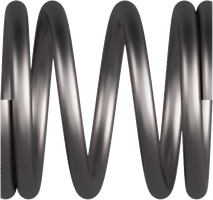
-
Open Ends: Springs with open ends have coils that are not ground flat, leaving a slight gap between the end coil and the adjacent coil. This design is often used when space is limited or when the spring needs to be installed in a specific orientation. Open ends allow for more flexibility in installation, making it easier to fit the spring into tight spaces or irregularly shaped assemblies. However, this design may result in less stability under load, so it is typically used in applications where precise load distribution is not as critical, such as in light-duty mechanisms, toy components, or small electronic devices.
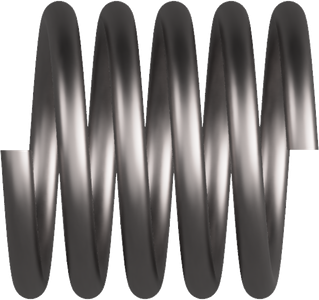
-
Hooks and Loops: Extension springs often feature hooks or loops at their ends, allowing them to be easily attached to other components in an assembly. These terminations are designed to transmit the force of the spring to other parts of the system, making them essential for applications that involve tension rather than compression. For example, in a garage door system, extension springs with hooks are used to counterbalance the weight of the door, making it easier to lift and lower. The design and orientation of the hooks can be customized to ensure that the spring functions properly within the specific mechanics of the system.
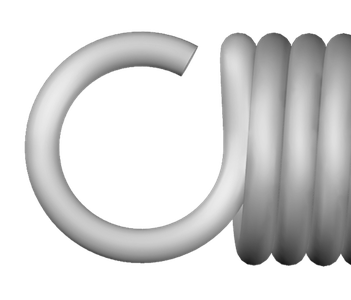
5. Wind Direction
The wind direction of a spring refers to the direction in which the coils are wound, and it plays a significant role in how the spring will function when subjected to torsional forces. This is particularly important for torsion springs, where the wind direction determines the direction of the force exerted by the spring when it is twisted. Understanding and customizing the wind direction is essential for ensuring that the spring performs correctly in its intended application.
-
Right-Hand Wind: In a spring with a right-hand wind, the coils are wound in a clockwise direction when viewed from one end. This means that the spring will exert force when twisted in a counterclockwise direction. Right-hand wound springs are commonly used in applications where the force needs to be applied in a specific direction, such as in clock mechanisms, ratchet tools, and certain types of valves. Customizing the wind direction to be right-handed ensures that the spring functions properly within the mechanics of the system, providing the necessary force and torque in the correct direction.
-
Left-Hand Wind: A left-hand wound spring has coils that are wound in a counterclockwise direction when viewed from one end. This type of spring will exert force when twisted in a clockwise direction. Left-hand wound springs are used in applications where the force needs to be applied in the opposite direction of a right-hand wound spring. This is often the case in paired torsion springs, where two springs work together in opposite directions to balance a load or provide symmetrical force. For example, in a garage door system, one spring may be wound in a right-hand direction and the other in a left-hand direction to ensure that the door moves smoothly and evenly. Customizing the wind direction to be left-handed is crucial in these types of applications to achieve the desired mechanical balance and performance.

Customizing the wind direction of a spring is a critical consideration in ensuring that it functions correctly within your assembly. By selecting the appropriate wind direction, you can control the direction of the force exerted by the spring, ensuring that it operates as intended and provides the necessary torque and movement in your application. Whether you need a right-hand or left-hand wound spring, understanding the importance of wind direction will help you make the right choice for your specific needs.
6. Plating and Finishes
Plating and finishes are not just about enhancing the aesthetic appeal; they play a crucial role in improving the spring's overall performance, particularly in terms of corrosion resistance, electrical conductivity, and durability. Depending on your application, the right plating can provide added protection against environmental factors, improve the spring's functionality, and ensure it meets the specific demands of its intended use. Acxess Spring offers a variety of plating options to meet diverse needs, each with unique properties and benefits:
-
Zinc Plating: Zinc plating provides a matte chrome appearance and is widely recognized for its excellent corrosion resistance. This makes it a popular choice for springs used in outdoor or humid environments where exposure to moisture and corrosive elements is a concern. Zinc plating also enhances the spring's durability, providing a clean, bright finish that not only looks appealing but also adds an extra layer of protection against rust and wear

-
Black Zinc: Black zinc plating offers similar corrosion resistance to standard zinc plating but with a sleek black finish. This plating is particularly effective for springs used in outdoor environments where both aesthetic appeal and durability are important. The black zinc finish provides a clean, professional appearance while offering additional protection against rust and environmental damage, making it an ideal choice for visible components that must withstand harsh conditions.
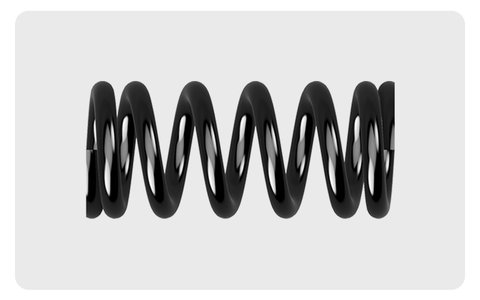
-
Black Oxide: Black oxide plating gives springs a matte black finish, primarily chosen for its aesthetic appeal and its ability to reduce light reflection. While it offers mild corrosion resistance, its primary function is to reduce friction between coils, which can be beneficial in applications requiring smooth operation and minimal wear. Black oxide is an excellent choice for springs in applications where a sleek, low-reflective appearance is desired without extensive exposure to highly corrosive environments
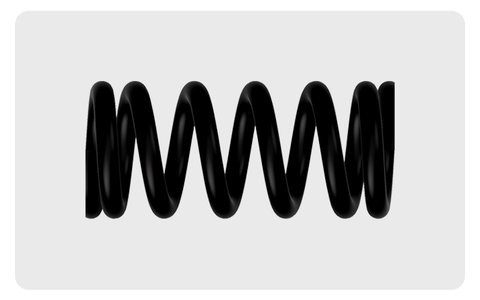
-
Gold Iridite: Gold iridite plating provides superior corrosion resistance and is known for its excellent electrical conductivity, making it an optimal choice for electronic components. This plating is often used in applications requiring high reliability, such as electrical connectors and sensitive electronic devices. The gold iridite finish ensures that the springs maintain their performance under demanding conditions, particularly where conductivity and corrosion resistance are critical.
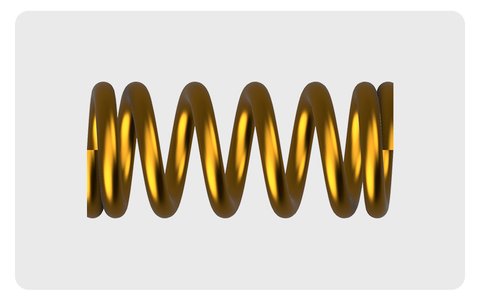
-
Nickel Plating: Nickel plating offers a lustrous, shiny silver chrome finish that is both aesthetically appealing and electrically conductive. This bright, glossy finish not only enhances the spring's appearance but also provides moderate corrosion resistance. Nickel-plated springs are commonly used in applications where a combination of visual appeal and electrical conductivity is required, making them suitable for various decorative and functional purposes

-
Copper Plating: Copper plating is primarily chosen for its excellent electrical conductivity, making it ideal for springs used in battery contacts, electrical connectors, and other applications where conductivity is paramount. The copper finish also offers a distinctive reddish-brown appearance, which can be both functional and aesthetically pleasing, depending on the application
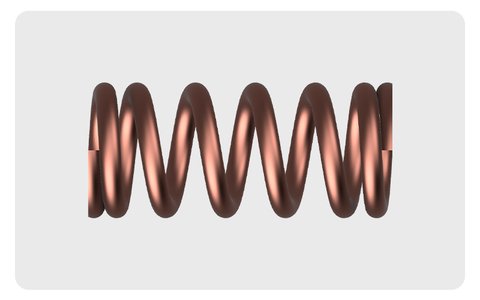
-
Gold Plating: 14K gold electroplating is the premium option for springs requiring the highest level of electrical conductivity. This process involves placing the compression springs on a copper wire necklace or individually on a rack to ensure an even, high-quality finish. While more costly, gold plating provides unparalleled conductivity and corrosion resistance, making it the preferred choice for high-performance electronic components and other critical applications where performance cannot be compromised.
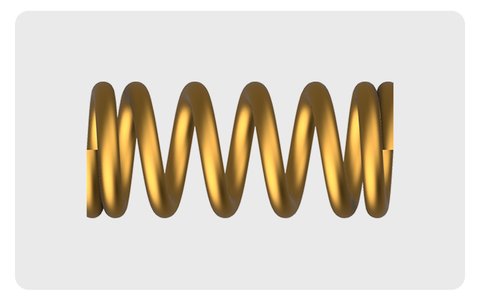
By selecting the appropriate plating and finish for your compression springs, you can significantly enhance their performance, extend their lifespan, and ensure they meet the specific needs of your application. Whether you need corrosion resistance, electrical conductivity, or simply a polished appearance, Acxess Spring's range of plating options provides the flexibility to tailor your springs to their intended environment and function.
Acxess Spring's Tools for Customization
Acxess Spring offers a range of advanced tools that can assist you in the design, testing, and customization of springs, ensuring that they meet your exact specifications and perform optimally in your application. These tools are designed to help you visualize, simulate, and refine your spring designs, making it easier to achieve the desired results and push the boundaries of innovation in spring technology.
-
3D CADs and 3D Blueprints: Acxess Spring provides 3D CAD models and blueprints that allow you to visualize your custom spring design in three dimensions. This feature is particularly valuable for engineers and designers who need to ensure that the spring will fit perfectly within their assembly and interact correctly with other components. By creating a 3D model of your spring, you can identify potential issues, such as clearance problems or interference with other parts, before the spring is manufactured. This helps to reduce the risk of errors and costly redesigns, ensuring that the final product meets your exact requirements. Additionally, 3D blueprints provide detailed specifications and dimensions, making it easier to communicate your design needs to manufacturers and other stakeholders.
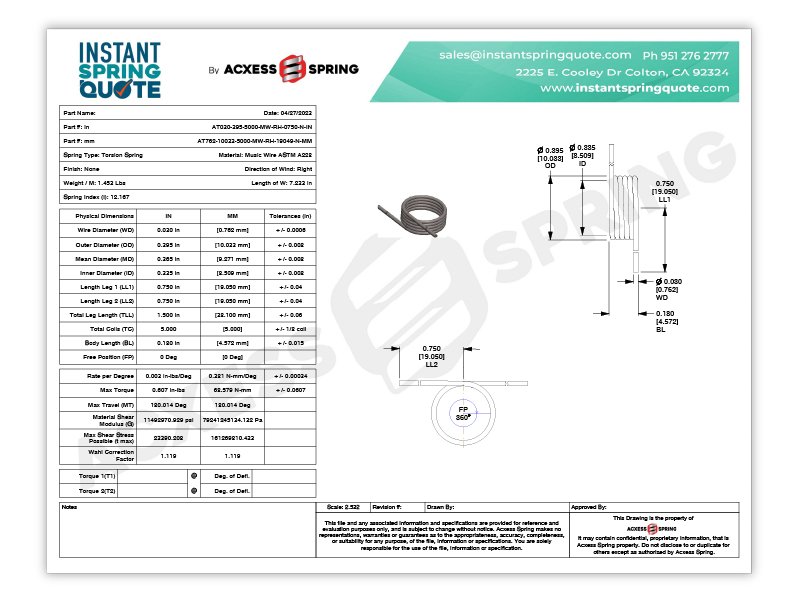
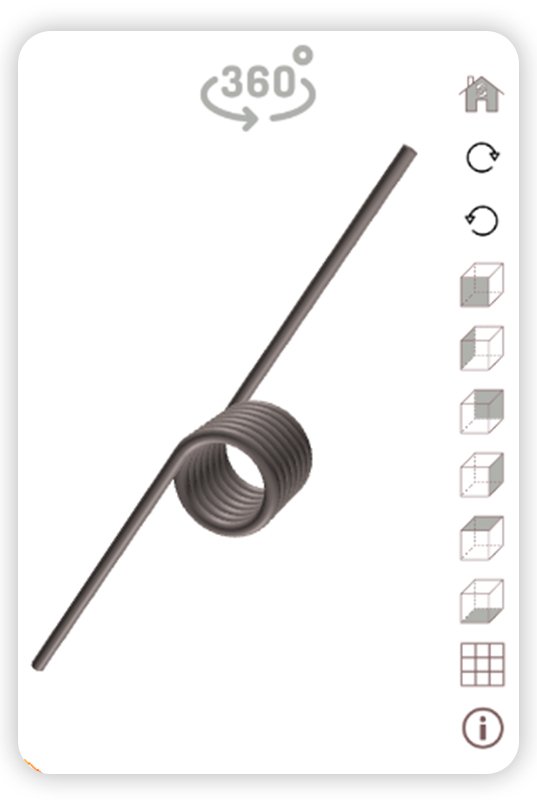
-
Online Spring Force Tester: The Online Spring Force Tester is a powerful tool that allows you to simulate the performance of your spring under different loads and conditions. This tool enables you to fine-tune the spring rate, load capacity, and deflection characteristics to match your specific needs, ensuring that the spring performs as expected in its intended application. By using the Online Spring Force Tester, you can experiment with different design variables, such as wire diameter, coil count, and material, to optimize the spring's performance. This tool is particularly useful for engineers who need to validate their designs and ensure that the spring will meet the required specifications before it is manufactured.
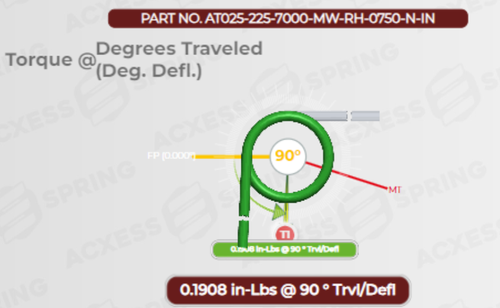
By leveraging these advanced tools, you can take full control of the spring design and customization process, ensuring that your springs are perfectly tailored to your needs. Whether you're designing a spring for a new product, refining an existing design, or testing the performance of a custom spring, Acxess Spring's tools provide the flexibility and precision you need to achieve the best possible results.
Applications and Case Studies
To fully appreciate the importance of spring customization, it's helpful to consider some real-world applications where tailored springs have made a significant impact. Custom springs are used in a wide range of industries, from medical devices and automotive systems to consumer electronics and industrial machinery. Each of these applications requires springs with specific characteristics that are optimized for their unique environments and functional requirements.
-
Medical Devices: In the medical field, precision and reliability are paramount. Custom springs used in medical devices must meet strict tolerances and be made from materials that are biocompatible and resistant to corrosion. For example, springs used in insulin pumps, surgical instruments, and stents need to be precisely engineered to ensure they function safely and effectively. Stainless steel is often the material of choice due to its corrosion resistance and durability, while the spring's size and load capacity must be carefully calibrated to match the delicate nature of these devices. In some cases, springs in medical devices are also coated or treated to enhance their performance and longevity, such as through passivation or electroplating.
-
Automotive Industry: The automotive industry relies heavily on custom springs to ensure the safety, comfort, and performance of vehicles. Springs used in automotive applications must withstand extreme conditions, including high temperatures, vibrations, and exposure to corrosive substances like road salt and oil. For example, in a car's suspension system, springs must be strong enough to support the weight of the vehicle and absorb shocks from the road, while also being durable enough to last through thousands of miles of use. Custom springs in automotive engines and transmissions must also be precisely engineered to handle high loads and temperatures without failing.
-
Consumer Electronics: In the world of consumer electronics, small springs with customized dimensions and materials play a crucial role in the functionality and reliability of devices. These springs must be reliable, with precise load capacities and the ability to withstand repeated use without failure. For instance, springs in smartphone buttons, camera mechanisms, and wearable devices are designed to provide consistent tactile feedback while enduring thousands of cycles of use. Customizing the material, size, and finish of these springs ensures that they meet the specific needs of each device, whether it's providing a crisp button press, enabling a smooth lens movement, or ensuring the longevity of a wearable's clasp.
These case studies highlight the versatility and importance of spring customization in ensuring that the springs you use are perfectly suited to your application. Whether you're developing a new medical device, designing a high-performance vehicle, or creating the next must-have consumer gadget, custom springs offer the flexibility and precision you need to achieve your goals.
Maximizing Spring Performance
Customization is the key to unlocking the full potential of springs in any application. From the size and material to the surface finish and wind direction, nearly every aspect of a spring can be tailored to meet the unique demands of your project. By understanding the available customization options and utilizing tools like Acxess Spring’s 3D CADs, 3D Blueprints, and Online Spring Force Tester, you can design springs that not only meet but exceed your expectations.
Whether you're developing a new product, improving an existing one, or replacing a worn-out spring, taking advantage of these customization options will ensure that you get the perfect spring for your needs. Don't settle for off-the-shelf solutions—explore the possibilities of custom springs and discover how they can enhance your products and projects. By working closely with spring manufacturers and utilizing advanced design and testing tools, you can push the boundaries of innovation and create springs that deliver superior performance, reliability, and longevity in any environment.
- What is a Custom Spring?
- What Can You Customize on a Spring?
- 1. Size and Dimensions
- 2. Material Selection
- 3. Spring Rate and Load Capacity
- 4. End Types and Terminations
- 5. Wind Direction
- 6. Plating and Finishes
- Acxess Spring's Tools for Customization
- Applications and Case Studies
- Maximizing Spring Performance
